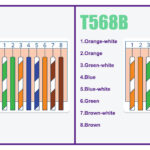It’s a question that has likely crossed the mind of every cat lover: why are cats so undeniably cute? After all, these creatures, sharing ancestry with formidable predators like lions and tigers, possess a charm that captivates millions worldwide. Despite their independent nature and sometimes aloof demeanor, we find ourselves utterly enchanted by our feline companions. But what exactly is it about these furry animals that triggers such a powerful “cute response” in humans?
One key factor lies in neoteny, the retention of juvenile features in adulthood. Cats, especially kittens, exhibit traits like large eyes, rounded faces, and soft features – characteristics we instinctively associate with babies and vulnerability. These features trigger our innate nurturing instincts, making us want to care for and protect these seemingly delicate creatures. This biological predisposition is a powerful element in the cat cuteness equation.
Beyond physical traits, domestication has likely played a significant role in shaping our perception of cat cuteness. Over thousands of years, cats have evolved alongside humans, and traits that were appealing to us, perhaps unintentionally, were favored. Gentle temperaments, playful behaviors, and even those endearing “kneading” paws – reminiscent of a kitten nursing – are all traits that have been subtly reinforced through the domestication process. Essentially, cats have, in a way, adapted to become “cuter” to humans, ensuring their place in our homes and hearts.
Furthermore, cat behavior contributes significantly to their perceived cuteness. The soft purr, a sound often associated with contentment and comfort, is incredibly soothing to humans. Their playful antics, from chasing laser pointers to batting at dangling toys, evoke joy and amusement. Even their seemingly independent nature can be interpreted as endearing, a kind of mysterious allure that keeps us intrigued and wanting to understand them better.
From a psychological perspective, the human-cat bond provides emotional benefits that further amplify our perception of their cuteness. Cats offer companionship, reduce stress, and provide a sense of comfort and routine. This positive emotional association intertwines with our perception of their physical and behavioral traits, creating a powerful feedback loop that reinforces their “cute” status. In essence, the cuteness of cats is not just skin deep; it’s deeply rooted in biology, evolution, behavior, and the profound emotional connection we share with these fascinating animals.
Ultimately, the question of “Why Are Cats So Cute?” doesn’t have a single, simple answer. It’s a complex interplay of biological predispositions, evolutionary influences, behavioral traits, and the deeply personal bonds we form with these enigmatic creatures. And perhaps, the mystery itself is part of their enduring appeal.


